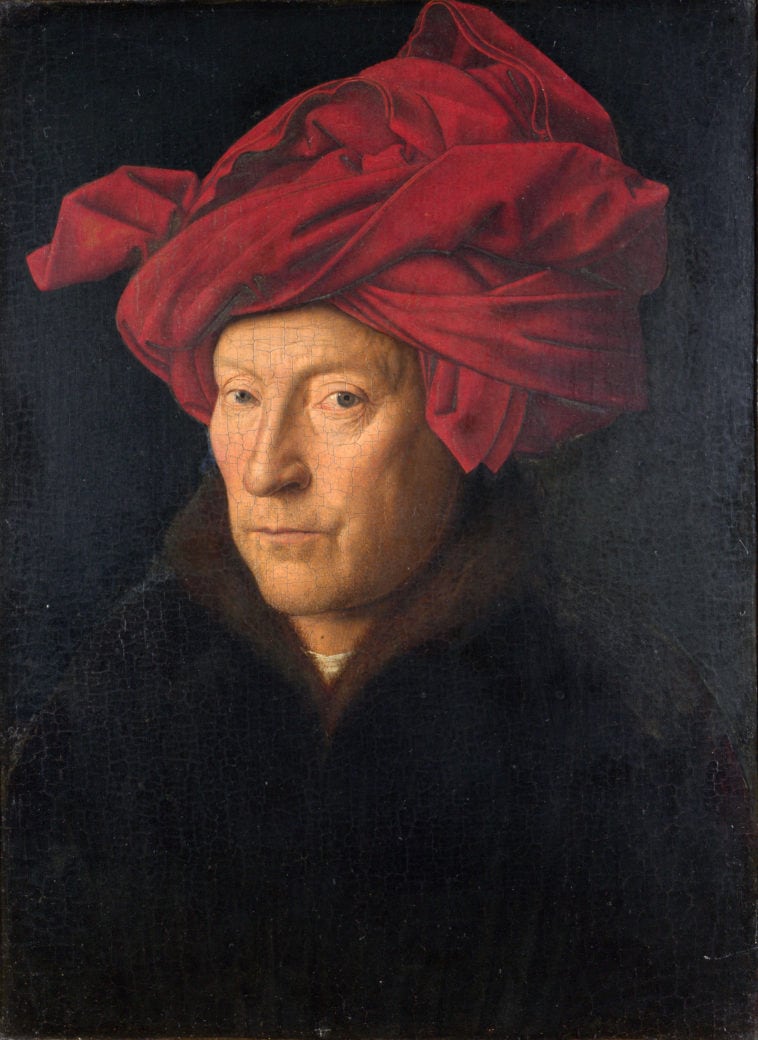Key Takeaways
- Jan van Eyck, a pivotal figure of the Early Netherlandish painting, mastered oil paint techniques that enhanced naturalism in art, moving away from the International Gothic style.
- He was not only a court painter but also a diplomatic envoy, reflecting his multifaceted role beyond just artistic endeavors.
- Van Eyck’s works are distinguished by their detailed realism, intricate use of light, and layered iconography, blending the spiritual with the physical.
- His portraits revolutionized the depiction of personal identity in the 15th century, influencing an entire generation of artists.
- Despite common myths, van Eyick did not invent oil painting but significantly advanced the technique.
The Life and Influence of Jan van Eyck
Imagine walking through the cobbled streets of 15th century Bruges, a vibrant center of art and commerce, where the air buzzes with the chatter of traders and the rich smell of oil paint drifts from open studio windows. In this setting, Jan van Eyick not only found his home but also his canvas, where he painted works that remain masterpieces of detail and realism to this day.
Born around 1380 or 1390 in Maaseik, now Belgium, van Eyck emerged in the art scene under the patronage of nobility such as Philip the Good, Duke of Burgundy. His career, however, was more than just painting; it was punctuated by diplomatic missions, including a crucial one to Portugal that influenced the course of Burgundian politics.
Van Eyck’s ability to capture the texture of fabrics, the subtlety of human expression, and the intricate reflections of light was revolutionary. His most famous work, the Ghent Altarpiece, is a prime example of his mastery, with its realistic figures and detailed portrayal of biblical scenes. Each brushstroke tells a story, and the layers of meaning in his paintings create a narrative that goes beyond the visual elements.
“Did you know,” I’d muse, leaning closer as if sharing a secret, “that some say van Eyck could paint the soul itself? There’s a spirit in his works that transcends the mere act of painting.”
His portraits, like that of the Arnolfini Wedding, are not just depictions of wealthy patrons but windows into a bygone era, capturing the essence of the people and their time with a clarity that few could match. His use of the oil medium allowed for greater manipulation of light and detail, setting a new standard for artists of his time and beyond.
Reflective Questions
- How might van Eyck’s diplomatic experiences have influenced his artistic works?
- In what ways do van Eyck’s pioneering techniques continue to influence modern artists?
- What can van Eyck’s meticulous attention to detail in his portraits tell us about the culture and society of the Northern Renaissance?
FAQs
Q: What is Jan van Eyck best known for?
A: Jan van Eyck is best known for his advancements in oil painting and for his detailed and realistic portraits and religious panels, particularly the Ghent Altarpiece.
Q: Did Jan van Eyck invent oil painting?
A: No, he did not invent oil painting, but he did refine the technique and was one of the first to use it to its full potential, bringing greater depth and realism to his works.
Q: How did Jan van Eyck’s work influence other artists?
A: Van Eyck’s techniques, particularly his use of oil as a medium, were revolutionary and widely adopted. His attention to detail and his method of layering colors influenced countless artists in the Northern Renaissance and beyond.
Q: Are there any surviving works of Jan van Eyck?
A: Yes, about 20 paintings are confidently attributed to him, including the well-known Ghent Altarpiece and the Arnolfini Portrait.
Q: Where can I see Jan van Eyck’s paintings today?
A: Many of his works are held in major museums around the world, including the National Gallery in London and the Louvre in Paris.





